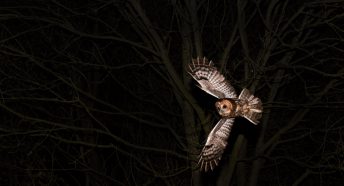Festive feasting
Ashen faggot…jough-y-nollick…stargazy pie: England’s festive food and drink is inextricably linked to the seasons in rural life, a heady recipe of ancient superstition, Pagan rituals, Christian tradition and Victorian sentimentality. A glorious chaotic culinary mix.
Throw in the fact that Hanukkah, the Jewish festival of lights, also falls at this time of year, with all its associated dishes, and any belt-tightening becomes a laughable ambition.
One of the most graphic rural Christmas scenes was conjured up by the writer Daniel Defoe in the early 18th Century who described 150,000 geese, with little sacking boots to protect their feet, being herded from East Anglia to London. It took weeks to reach the capital’s hungry ‘goose clubs’, formed among the workers to make Christmas affordable.
Now our seasonal ingredients are just as likely to be jetted in from more distant lands, but the English countryside and its harvest bounty still holds strong.
The whole culinary celebration starts with Stir-up Sunday on 22 November. You may have missed it, but it’s not too late to make your wishes as you stir the Christmas pud. It’s sacrilege to say it in some households, but there are rumours of experts who claim you can’t taste the difference between a pudding made five weeks early, or the day before Christmas.
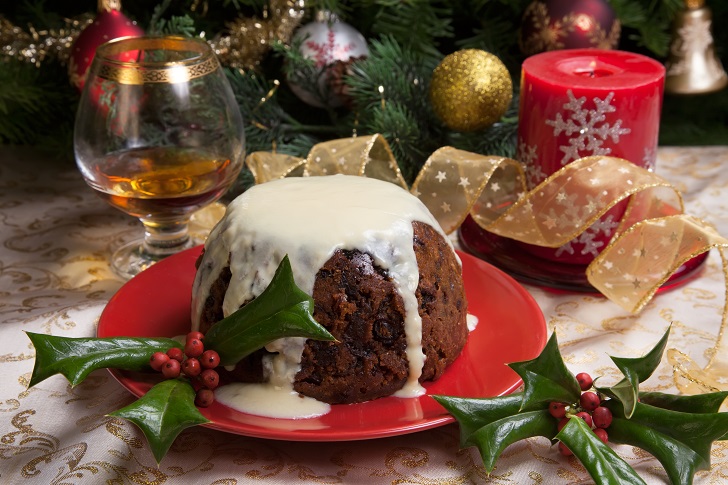
The rules, of course, are strict, 13 ingredients (Jesus and his disciples), each member of the family makes a wish as they stir, and the spoon (this one is for purists) is passed east to west to represent the journey of the Wise Men. If you put a lucky charm into the mix, like a coin, don’t forget to remind your diners unless you’ve an emergency dentist on stand-by. The pudding as it is now is actually a classic bit of Victoriana and was Prince Albert’s favourite. In villages around England, earlier pudding incarnations were more like a savoury porridge, called frumenty.
Some of these old recipes still thrive. Every 23 December, the Cornish villagers of Mousehole enjoy stargazy pie, complete with pilchards peeking out of the crust, in honour of legendary fisherman Tom Bawcock who risked stormy seas to feed the hungry at Christmas time. In 2007, contestant Mark Hix won the BBC’s Great British Menu with a variant of the dish. How’s that for a surviving rural tradition?

Strictly speaking, the next one is Manx Gaelic, but jough-y-nollick deserves a mention for its intriguing name alone, which translates to ‘the drink of Christmas’, which in this case turns out to be a warmed spiced ale. Devon has egg-hot, a mixture of yolks, cider and spices, and there’s a similar concoction from the Shetland Isles called whipcoll. Yorkshire has lamb’s wool, a powerful blend of beer, apples, sugar and cream.
Ashen faggot, a Pagan tradition that still takes place in some west country pubs, involves a toast of cider as each faggot, a bundle of sticks, burns. Some of these curiosities have fallen by the wayside. But perhaps worth a revival to celebrate your next get-together when Covid rules allow.
With the drinks taken care off, let’s look at the main meal.
Nowadays the popular main course is turkey. Henry VIII was the first English monarch to enjoy one at Christmas, although for centuries goose was more commonly served. Peacock or swan was for the better-off, with boar’s head as a main course. But by the time a reformed Scrooge sent Bob Cratchit out for Christmas ingredients, turkey was in the ascendancy.
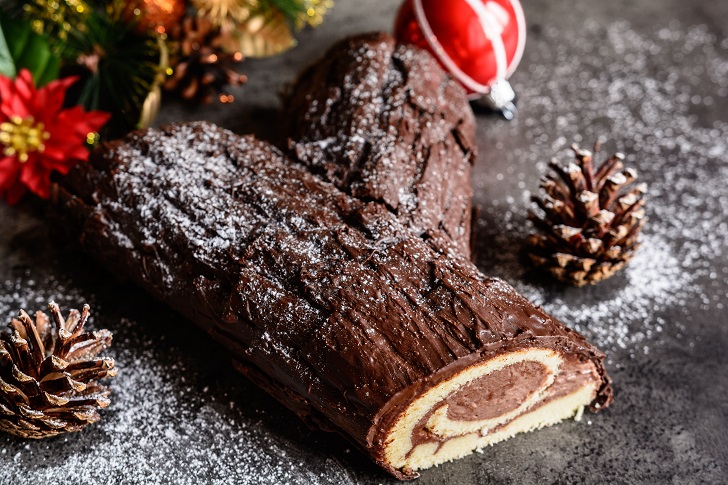
If the pudding is already stirred, bring on the Yule Log, once a practical source of comfort. And now? A practical source of comfort – the result of delicious chocolate though, rather than a flaming log. This becomes a bit of free for all on recipes – I saw one recently get five stars because as well as all the usual tempting ingredients, it includes two or three crushed extra strong mints for the filling and icing. Nothing to do with countryside tradition, but apparently children love it.
Mince pies are another favourite that come with superstition. It’s said that one must be eaten for each of the 12 days of Christmas to avoid bad luck. But maybe that’s just an excuse dreamt up by mince pie lovers – or their sellers.
And after all that feasting, there’s Twelfth Night cake to come. It began life in English villages as a yeast-leavened bread, enriched with dried fruit and ale. Over time, it was enhanced with brandy or rum and sugar, giving it a close texture. At the height of its Victorian popularity, inside each grand cake was a dried bean or pea. Those who discovered them would be proclaimed king or queen for the day.
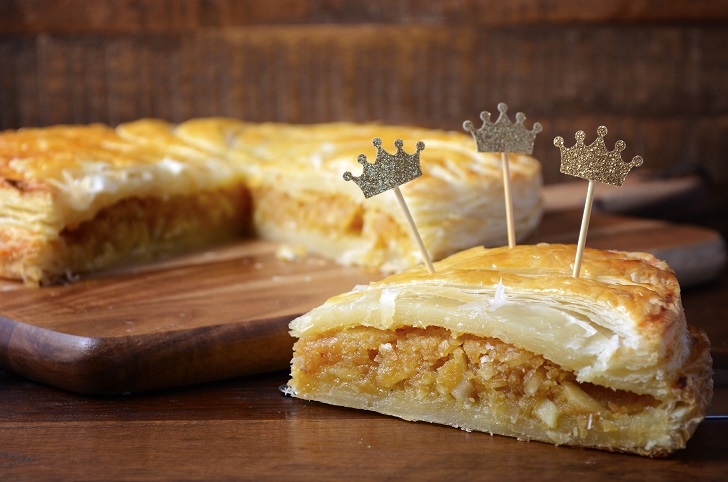
This year Hanukkah runs from 10 to 18 December, celebrating the endurance of the Jewish religion and culture. It’s a time for family get-togethers – covid bubbles allowing – swapping gifts and enjoying food, from hearty potato latkes to sweet and crispy kugel, traditional food that fits well with other traditions of winter feasting.
And once again, the harvest will provide many ingredients. For instance, you can create a brisket stew with potatoes and carrots and use a variety of spices and herbs such as fresh cracked black pepper, paprika, salt, thyme, or parsley. Stir in prunes and apricots for a touch of sweetness.
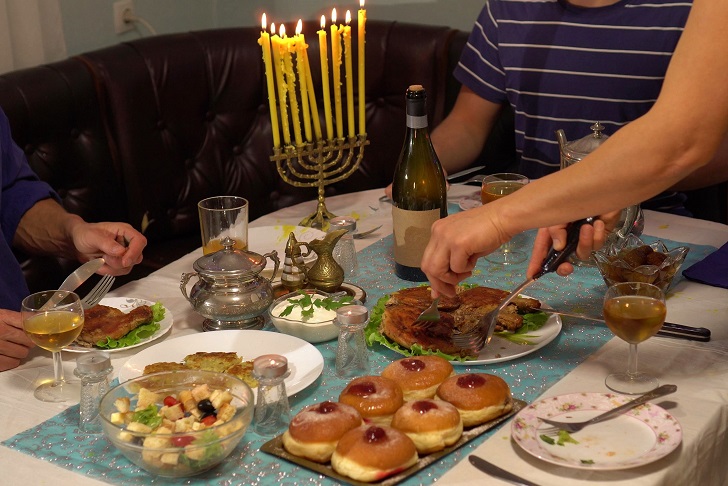
Before Defoe and his waddling London-bound geese, the foundations of modern vegetarianism in England were laid in 1683. The Christian mystic and dietary reformer Thomas Tryon published a very modern-sounding book, The Way to Health, Long Life and Happiness.
You don’t have to be vegetarian (although an increasing number of people are) to enjoy vegetarian food. And there are some mouth-watering, imaginative, Christmas recipes to explore, some of which being redolent of the English countryside. Who could resist dishes like: mixed mushroom and tarragon gratin; Christmas slaw; honey-glazed parsnip and potato tart with stilton and rosemary; mushroom and chestnut wellington; savoy cabbage, walnut and sage lasagne; parsnip tatin with winter pesto. I hope that given you some ideas for vegetarian feasts.
And of course, some traditions span religions, tastes and time. Giving chocolate money, whether it’s on Hanukkah or at Christmas, has been appreciated by children and grown-up children down the decades.
Happy festive eating!








